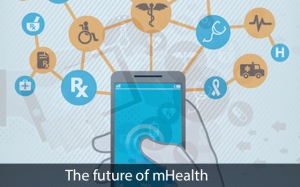Optimal use of Electronic Health Records is expected to bring in fundamental and revolutionary changes in the healthcare industry. Its adaptation has already resulted in enhanced patient care and coordination. Things are only expected to get better moving forward. However, it is very important to understand that Health IT is like a tool which needs to be used properly to derive the real benefits – that there are also possibilities of negative unintended consequences also, leading at times to adverse events if not used in the right way. Keeping this in perspective, guidance has been issued to enable healthcare personnel recognize clinical mishaps or unsafe conditions arising out of an electronic health records as and when they occur. Most of such incidents don’t otherwise get reported since the concerned clinicians and risk managers don’t see the role of health IT in those adverse events. Some of the common causes of such adverse events related to EHR or Health IT, in broad terms, are because of
- system interface issues
- wrong data input
- wrong record retrieval
- software functionality
- configuration issues
To conclude that the adverse results are specific to EHRs only and will not occur otherwise will not be apt. Even if one were using papers, the likelihood of such occurrences still exists. Identifying the source is critical here as with EHRs, errors can have a cascading effect very fast with erroneous data getting auto populated into related fields.

It has been widely accepted that if health IT errors are unaddressed; they will act as huge lag factors in improving the overall patient care. Hence, efforts are being put at various levels to combat it. Since EHRs have fundamentally altered how physicians interact with patients, its adoption amongst the existing group of physicians has not been a smooth one. Inadequate technical support and changing regulations have only added to the woes, so much so that time and again there are questions raised in the physician fraternity on its effectiveness. To ensure that the next generations of physicians do not join their predecessor in holding such prejudices, medical school curriculums are being changed so as to include the required training on EHR usage. The aim is to maximize the understanding and acceptance of EHRs right from the beginning. As long as they consider it as part and parcel of their job, there will always be an intent to find solutions to issues arising out of them and not question their existence at the first place. There are many ways to guard against IT-related incidents in healthcare setups. For e.g. some of steps which can be taken could be to
-
have a good monitoring system
-
support a culture where such incidents get reported the moment they are identified
-
establish a Health IT patient safety priority list
Among EHRs, it has been noted that the ones used in emergency departments seem to be more prone to errors. Research done in this field has suggested that such a trend could be a fall-out of the unique characteristics prevalent in these departments. Some of those would be rapid turn overs, frequent care transitions, interruptions and variance in patient volumes. EHRs have not been robust enough in handling so many factors.
The governing bodies realized that in order to find a solution to this issue, it will have to finally boil down to clinicians having the ability to share their insights with system developers. Since it is they who observe problems first-hand, they are best placed to share inputs related to making the required improvements. Also, it was concluded that just encouraging the clinician fraternity to work without subsequent actions from the IT side will lead to no positive developments whatsoever. Taking this into account a set of principles was shared with the EHR vendor industry to act as guidelines, the focus of which are on the following:
-
Patient safety
-
Privacy and security
-
Patient engagement
-
General business practices
-
Clinical and billing documentation
-
Interoperability and data portability
Besides the above, there are also implementation guidelines which have been shared with the vendor community. They have also been quite receptive to the guidelines and view this as a very important step taken so as to knit together stakeholders determined to improve the healthcare delivery system.
You can hire developers from healthcare solutions development companies in India who can help you build clinical and EHR/EMR software projects within allocated budgets and time schedules.
We provide Healthcare software development and Healthcare testing services. If you want to hire healthcare software developers for developing your medical application, please contact us at Mindfire Solutions.



